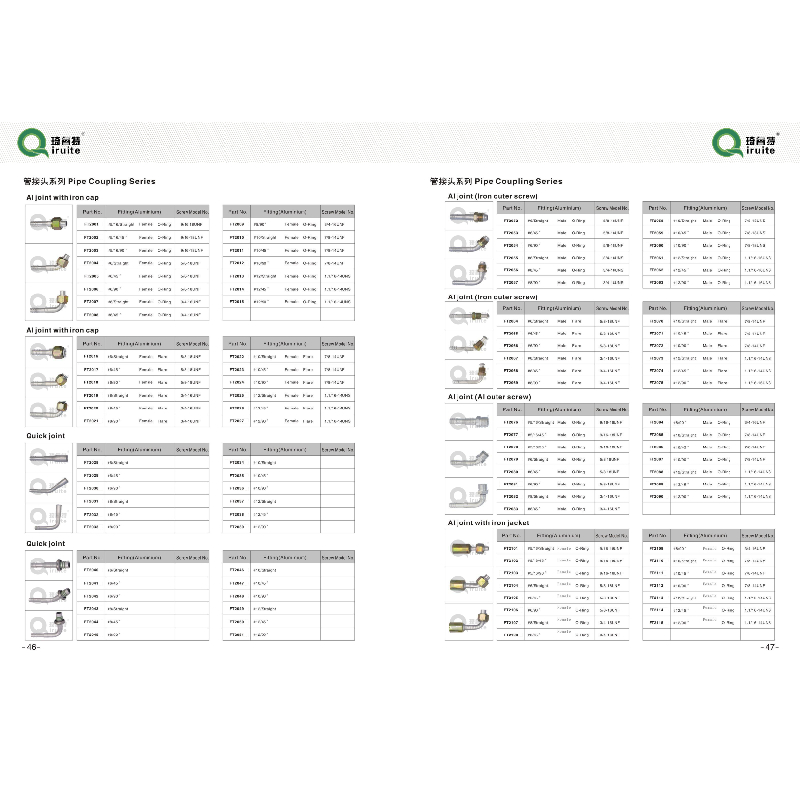Guidelines for Fixing a High-Pressure Power Steering Hose Effectively
How to Repair a High Pressure Power Steering Hose
The power steering system in your vehicle is crucial for easy maneuverability and smooth handling. The high pressure power steering hose is an essential component that carries fluid from the power steering pump to the steering gear. Over time, this hose can develop leaks or become damaged, leading to a loss of power steering assistance. Repairing a high pressure power steering hose is essential for maintaining your vehicle's performance. This article will guide you through the steps to repair or replace a damaged high pressure power steering hose safely.
Identifying the Problem
Before embarking on any repair, it is important to identify the signs of a damaged power steering hose. Common indicators include
1. Fluid Leaks Look for signs of power steering fluid pooling under your vehicle or on the ground. 2. Whining Noise A high-pitched whine when turning the steering wheel can indicate a low fluid level due to a leak. 3. Stiff Steering Wheel If the steering wheel becomes hard to turn, it may signal low fluid caused by a damaged hose.
Safety Precautions
Before starting any repair work, ensure that you take the necessary safety precautions
1. Park on a Level Surface To avoid accidental movement, park your vehicle on a flat surface. 2. Use Safety Gear Wear gloves and safety glasses to protect yourself from fluid and debris. 3. Disconnect the Battery To prevent any electrical issues, disconnect the vehicle battery before starting the repair.
Tools and Materials Needed
To repair a high pressure power steering hose, gather the following tools and materials
- Socket wrench set - Pliers - Power steering fluid - Replacement hose (if necessary) - Towels or rags for clean-up - Hose clamps (if applicable)
how to repair high pressure power steering hose

The Repair Process
1. Locate the Hose Identify the high pressure power steering hose. It runs from the power steering pump to the steering gear. Examine it closely for any visible cracks or leaks.
2. Remove the Damaged Hose Using a socket wrench, disconnect the hose from both ends. Be careful to place a towel or rag underneath to catch any leaking fluid. Use pliers if necessary to loosen any clamps.
3. Inspect Fittings and Connections Before installing a new hose, inspect the fittings and connections for any signs of damage or corrosion. Clean them thoroughly to ensure a good seal.
4. Install the New Hose If you are replacing the hose, place it in position and secure it to the power steering pump and steering gear. Ensure that it is properly aligned and that all connections are tight.
5. Fill with Power Steering Fluid Once the hose is securely in place, refill the power steering fluid reservoir with the appropriate fluid specified by your vehicle manufacturer.
6. Check for Leaks Reconnect the battery, start the vehicle, and turn the steering wheel from side to side to help circulate the fluid. Check for any leaks around the new hose and fittings.
7. Test Drive After ensuring there are no leaks, take your vehicle for a short drive. Pay attention to the steering response and listen for any unusual noises.
Conclusion
Repairing or replacing a high pressure power steering hose is a task that can save you from more extensive and expensive damage down the road. By following the steps outlined above, you can restore your vehicle's power steering system to optimal condition. However, if you are uncomfortable performing this repair or if the problem persists, it is always advisable to consult a professional mechanic. Regular maintenance checks can also help prevent power steering issues, ensuring your vehicle remains safe and easy to drive.
-
Ultimate Spiral Protection for Hoses & CablesNewsJun.26,2025
-
The Ultimate Quick-Connect Solutions for Every NeedNewsJun.26,2025
-
SAE J1401 Brake Hose: Reliable Choice for Safe BrakingNewsJun.26,2025
-
Reliable J2064 A/C Hoses for Real-World Cooling NeedsNewsJun.26,2025
-
Heavy-Duty Sewer Jetting Hoses Built to LastNewsJun.26,2025
-
Fix Power Steering Tube Leaks Fast – Durable & Affordable SolutionNewsJun.26,2025

